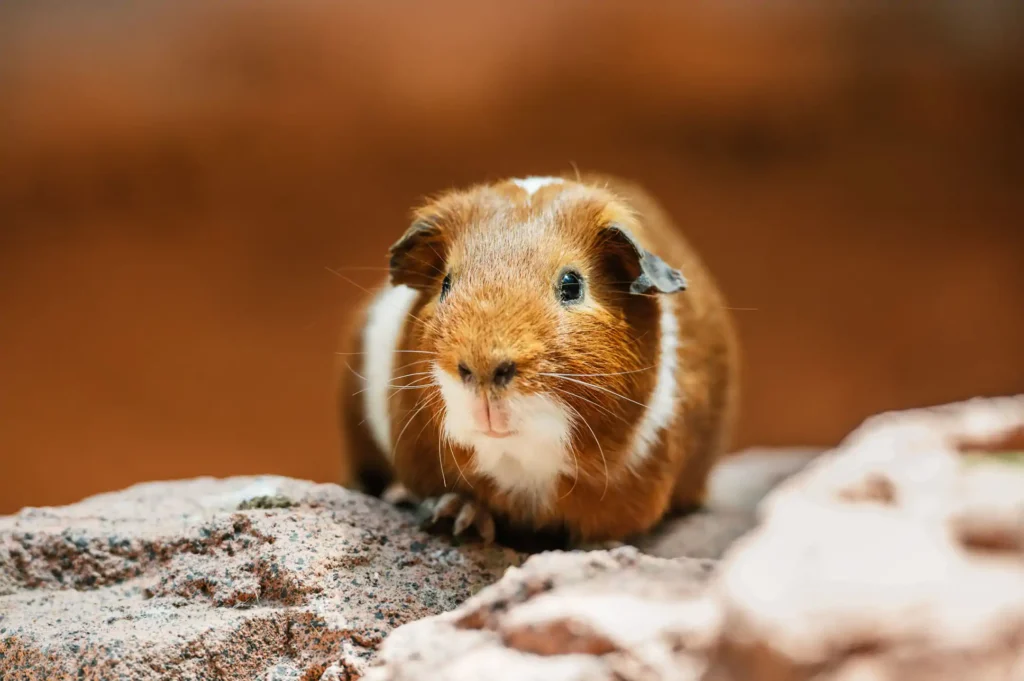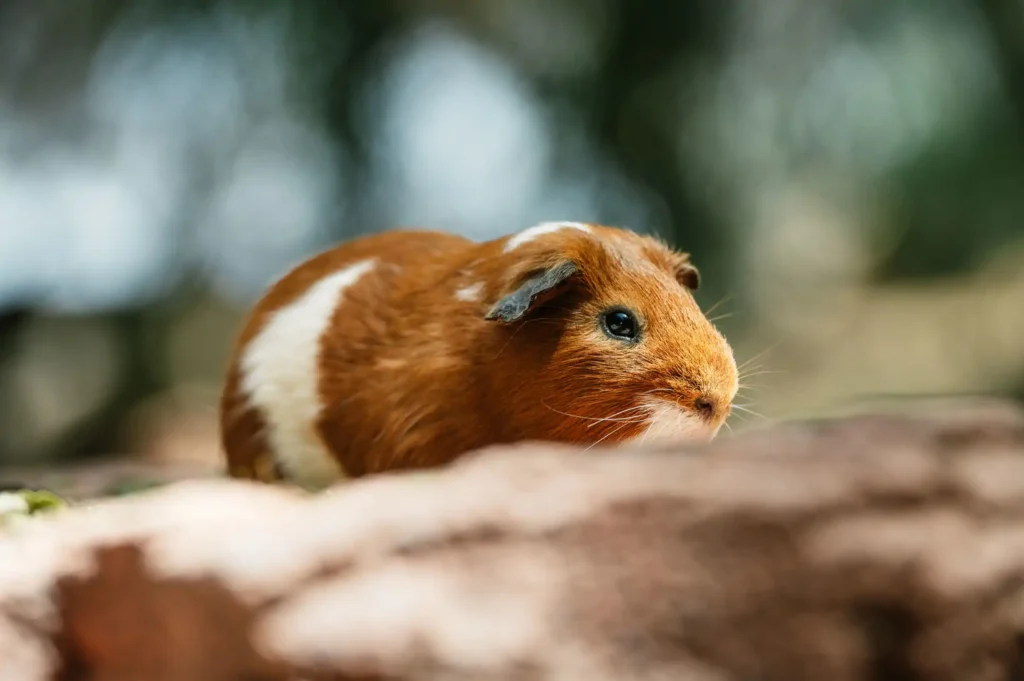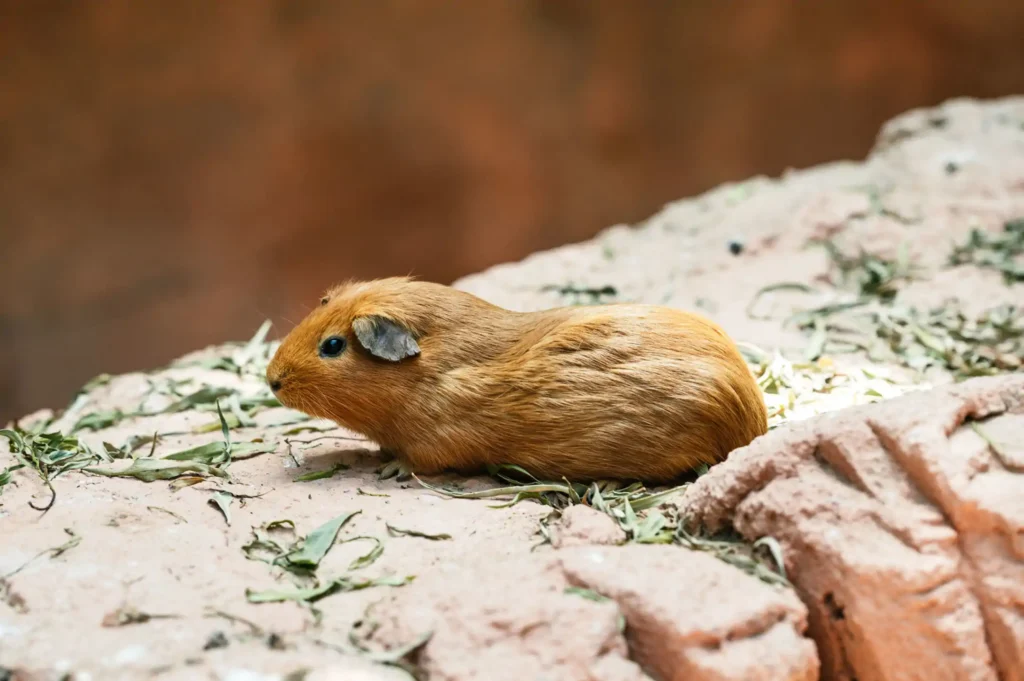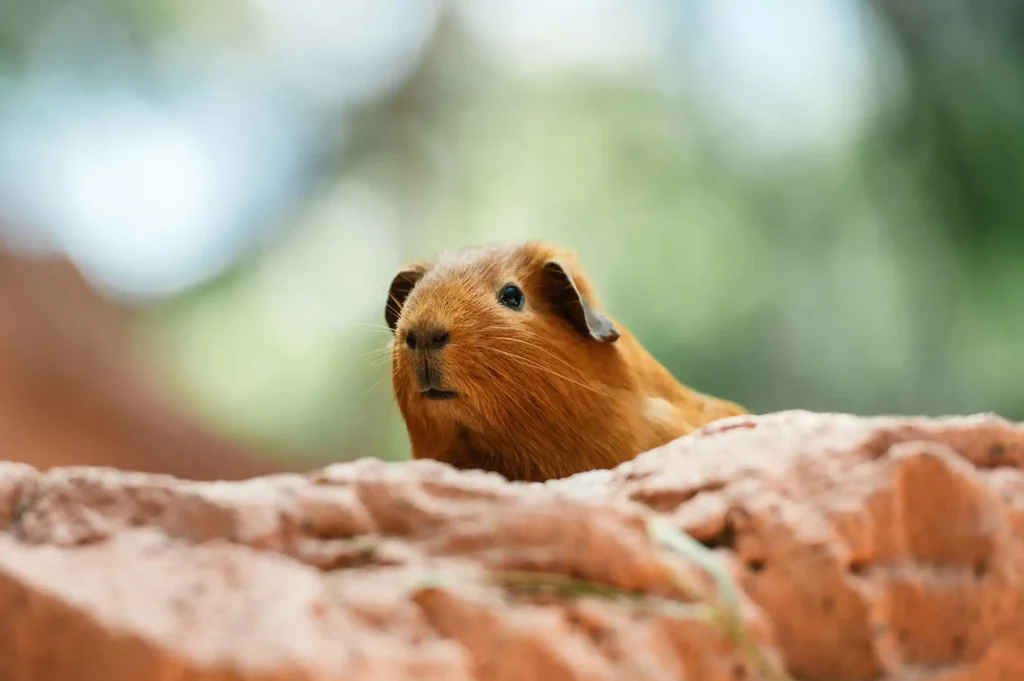Also called cavy or domestic cavy, among other names, this species originated after the crossing of several species of the genus Cavia and whose first data date back to 1554.
Physical Features
It’s a generally nervous animal, with a relatively large head in relation to its body. Common breeds weigh between 700 and 1200 grams when fully grown and measure between 20 and 25 cm in length. Guinea pigs typically live for around four to five years, but they can live up to eight years.
Habitat
It originates from South America.
They are not found naturally in the wild. They can live in grassy plains, although they use holes and burrows to hide and protect themselves.
Diet
Their diet is herbivorous based on fresh hay, leafy vegetables and some fruit. These animals cannot synthesise their own vitamin C and must obtain this vital nutrient from food.
Reproduction
They have a gestation period of 59-72 days, and give birth to 2-4 pups. The female can breed all year round, but the peak is in spring.
Threats
In many central and southern countries of the American continent, their meat has a high gastronomic value.
Guinea pigs are a prey for larger animals.
Protection Level





